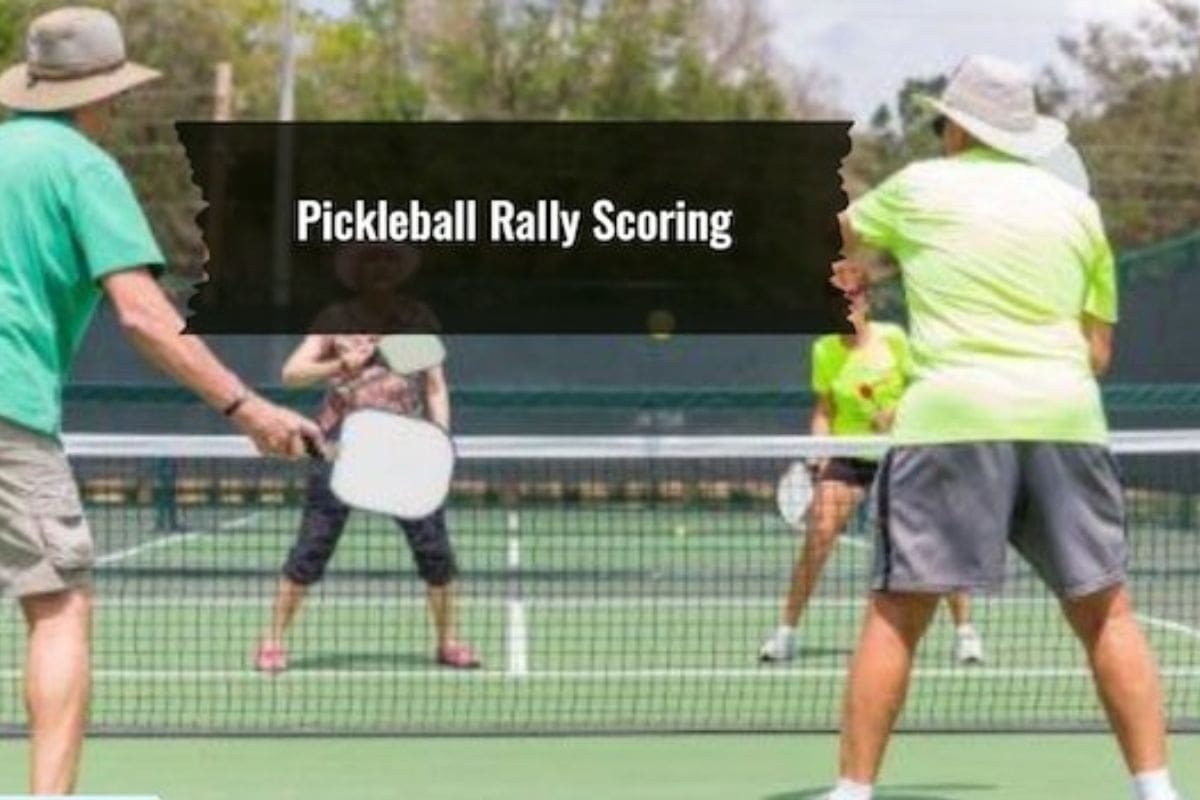Concept of a Rally in Pickleball: Pickleball, a sport that once thrived primarily in retirement communities, has evolved into a dynamic, fast-paced game that captivates athletes and spectators. What was once a leisurely activity marked by gentle dinks at the kitchen line has transformed into an intense sport featuring rapid counters, powerful swings, and fierce offensive plays. This evolution has introduced longer rallies and innovative ways to keep score, one of which is rally scoring.
What is Rally in Pickleball
In pickleball, a rally is the continuous exchange of the ball between opponents after the serve and before a fault occurs. This back-and-forth action is what drives the game, making each point contested a mini-battle on the court. As the sport has become more intense, these rallies have grown in length and excitement, pushing games to new competitive heights.
The Traditional Scoring System
Traditionally, pickleball employs a side-out scoring system, where only the serving team can earn points. If the serving team commits a fault, the serve is lost, but no points are awarded to the opposing team. This method can lead to prolonged games, especially when teams are evenly matched, as multiple rallies may occur before a point is scored.
Introducing Rally Scoring
Rally scoring, used in various sports like volleyball and badminton, offers a different approach. In this system, a point is awarded at the end of every rally, regardless of which team served. This method significantly accelerates the pace of the game, as every rally contributes to the score. The result is a more predictable game duration and increased excitement, for players and spectators.
Pros and Cons of Rally Scoring
Pros:
- Faster Games: With points awarded after every rally, games conclude more quickly.
- Predictable Durations: This scoring system ensures that game lengths are more consistent.
- Inclusive Scoring: Both offensive and defensive plays can result in points.
- Spectator Appeal: The quicker pace and constant scoring enhance the game’s appeal to viewers.
- Simplicity: Rally scoring is easier for new players to understand.
Cons:
- Defensive Scoring: Allowing defensive points changes traditional gameplay dynamics.
- No Server 1 and Server 2: This elimination can alter game strategies.
- Reduced Comebacks: The potential for extended scoring runs diminishes, making comebacks less likely.
- Change in Strategy: Players and coaches must adapt to a fundamentally different approach to the game.
- Impact on Beginners: Less experienced players may find it harder to develop their skills under this scoring system.
The Mechanics of Rally Scoring
To implement rally scoring, the serving team is decided by any chosen method, such as a coin flip or rock-paper-scissors. The player serving must position themselves on the right (even) side of the court if their team’s score is even, or the left (odd) side if their score is odd. The serve alternates between teams after each rally, with points awarded at the end of every exchange.
Key Rules in Rally Scoring
- Point Per Rally: Every rally ends with a point for the winning team.
- No Second Server: Unlike traditional scoring, there is no second server in doubles play.
- Court Sides: The serving team’s score dictates the server’s side – even scores serve from the right, odd scores from the left.
- Freezing at Match Point: The leading team must win the final point while serving to secure victory.
- Winning Margin: Games are typically played to 15 or 21 points, but a team must win by at least two points.
Comparison Between Traditional and Rally Scoring
In traditional scoring, only the serving team can score, and players rotate positions on the court after winning a point. This method can lead to lengthy, unpredictable game durations. Rally scoring, in contrast, speeds up the game by awarding points to either team at the end of each rally. Games are played to higher point totals (15 or 21) to balance the faster scoring pace.
While rally scoring has not yet become the official scoring system of pickleball, its advantages in terms of game speed, predictability, and spectator engagement make it a compelling alternative. Understanding and adapting to this scoring method prepares players for its possible future adoption and enhances their overall strategic approach to the game. As pickleball continues to grow in popularity, rally scoring might just be the next big step in the sport’s evolution.

News in Brief: Concept of a Rally in Pickleball
Pickleball, once a gentle game for retirement communities, has evolved into a fast-paced sport featuring intense rallies and powerful plays. Central to this evolution is the concept of a rally—continuous ball exchanges between opponents until a fault occurs. Traditionally, pickleball uses side-out scoring, where only the serving team can earn points, leading to prolonged games.
Rally scoring, however, awards points at the end of every rally, regardless of which team served, accelerating game pace and predictability. Pros include faster games, consistent durations, and increased spectator appeal, while cons involve changes in traditional dynamics and strategy.
In rally scoring, points are awarded per rally, with no second serve in doubles play. The leading team must win the final point while serving to secure victory. This system could mark the next step in pickleball’s growth, enhancing gameplay and viewing experience.
Also Read: James Ignatowich on Playing with Ben Johns and Anna Bright

